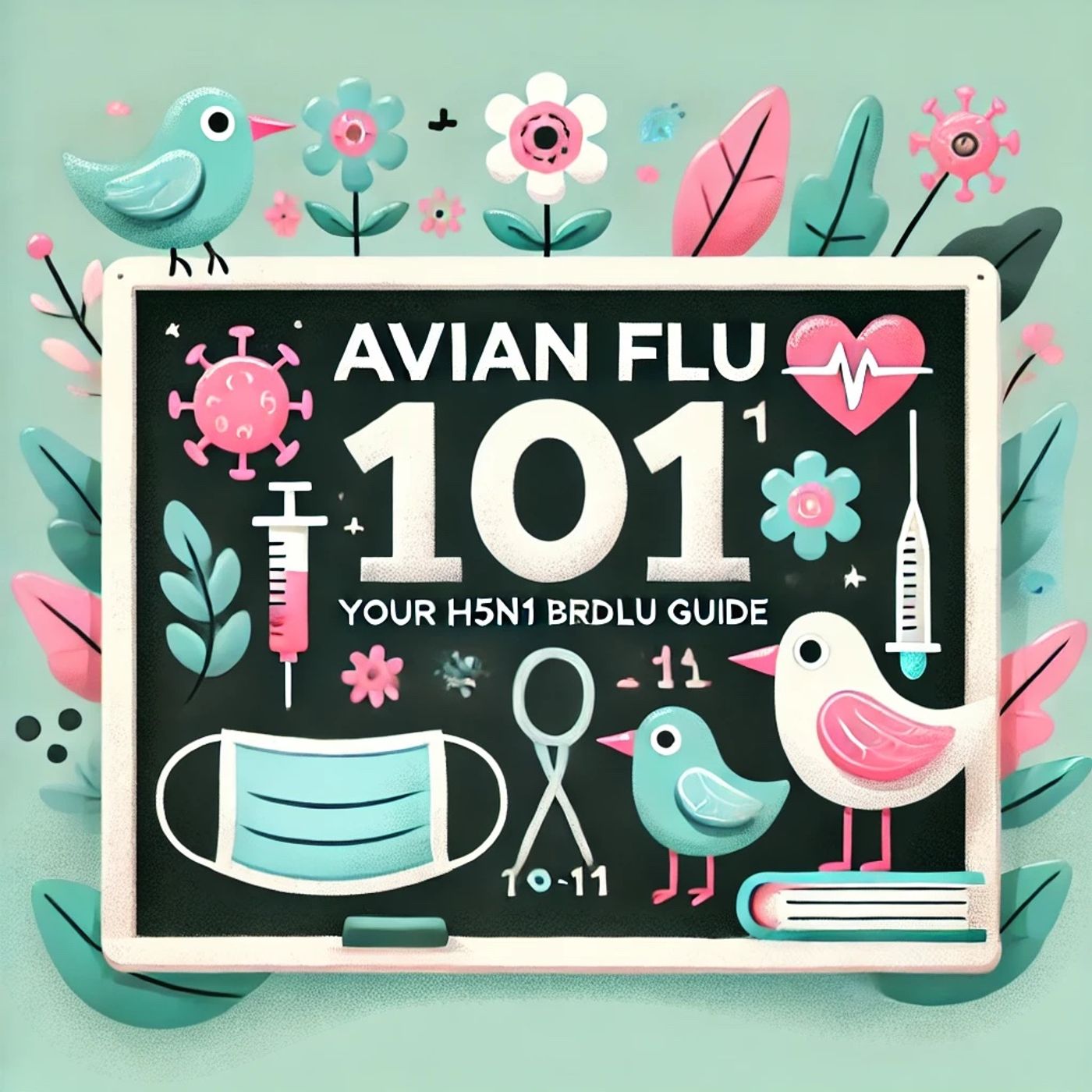Listen "H5N1 Bird Flu Explained: What You Need to Know About Transmission, Symptoms, and Current Risk Levels"
Episode Synopsis
Welcome to “Avian Flu 101: Your H5N1 Bird Flu Guide.” I’m your host, and in the next three minutes, we’ll unpack everything you need to know about H5N1 bird flu—what it is, how it works, and what makes it different from other viruses like seasonal flu and COVID-19.Let’s start with some basic virology. The H5N1 bird flu virus belongs to a group known as influenza A viruses, which are single-stranded RNA viruses with eight genetic segments. These gene segments can mix and match when viruses coinfect the same cell—a process called reassortment. Think of it as birds at a costume party swapping hats and masks, sometimes leading to surprising new styles, or in virus terms, new subtypes that may spread differently or cause more severe illness. H5N1 gets its name from two proteins on its surface—hemagglutinin (H) and neuraminidase (N), here specifically H5 and N1.So, what’s the history? H5N1 first appeared in wild birds in China in 1996. It quickly spread to poultry and then, in rare cases, to people. According to the National Academies, H5N1 has caused small numbers of human cases worldwide over the past 20 years, but those cases have often been extremely severe, with a fatality rate of 40 to 50 percent. Fortunately, recent US strains have not spread easily between people and have caused mainly mild symptoms in otherwise healthy individuals. Still, farm and poultry workers remain at higher risk due to close contact with infected animals.What does the terminology mean? “Highly pathogenic avian influenza” means this virus can cause severe disease and death in birds. “Zoonotic” means it can jump from animals—usually birds—to people. The infection is mainly spread to people through direct contact with sick birds, their droppings, or contaminated surfaces and equipment. Picture a bucket at a chicken farm full of water—if a sick bird contaminates that bucket, and someone later accidentally touches their mouth or nose, the virus can sneak in, a bit like an unwanted hitchhiker on your hand.What about bird-to-human and human-to-human spread? Bird-to-human infections are mostly due to close, prolonged exposure, not casual contact. Human-to-human spread has been very limited so far, but scientists are watching for any changes.Let’s compare H5N1 with seasonal flu and COVID-19. Bird flu is deadlier but far less transmissible than either seasonal flu or COVID-19. According to the CDC, the seasonal flu causes hundreds of thousands of deaths worldwide each year but is usually mild and self-limiting. COVID-19, caused by the SARS-CoV-2 virus, spreads more easily and can cause prolonged and sometimes severe illness. H5N1, in contrast, is not easily spread between people but is much deadlier if it infects humans, especially without early medical care. All three can cause fever, cough, and fatigue, but H5N1 often hits the lungs especially hard and can lead to rapid breathing problems and, in rare cases, multi-organ failure.Now, let’s tackle some quick Q&A:Is the general public at risk right now? The CDC and University of Florida report that the overall risk remains low for most people. Those who work closely with poultry or dairy cows are most at risk.Can you get H5N1 from eating cooked poultry or eggs? No—proper cooking destroys the virus.Will H5N1 become the next pandemic? That’s currently not likely, but scientists are monitoring for any changes in the virus that could make it easier to spread among people.Are there vaccines? There are experimental vaccines for high-risk groups, and regular seasonal flu vaccines do not protect against H5N1.That’s all for today’s episode of “Avian Flu 101.” Thanks for tuning in, and be sure to come back next week for more. This has been a Quiet Please production. For more, check out QuietPlease.ai.For more http://www.quietplease.aiGet the best deals https://amzn.to/3ODvOtaThis content was created in partnership and with the help of Artificial Intelligence AI
More episodes of the podcast Avian Flu 101: Your H5N1 Bird Flu Guide
H5N1 Bird Flu Explained: What You Need to Know About Avian Influenza and Human Health Risks
10/11/2025
H5N1 Bird Flu Explained: What You Need to Know About Avian Influenza and Human Risk in 2024
08/11/2025
H5N1 Bird Flu Explained: What You Need to Know About Transmission, Risks, and Prevention in 2024
03/11/2025
H5N1 Bird Flu Explained: What You Need to Know About Avian Influenza Risks and Transmission
01/11/2025
H5N1 Bird Flu Explained: What You Need to Know About Avian Influenza and Human Health Risks
31/10/2025
 ZARZA We are Zarza, the prestigious firm behind major projects in information technology.
ZARZA We are Zarza, the prestigious firm behind major projects in information technology.
